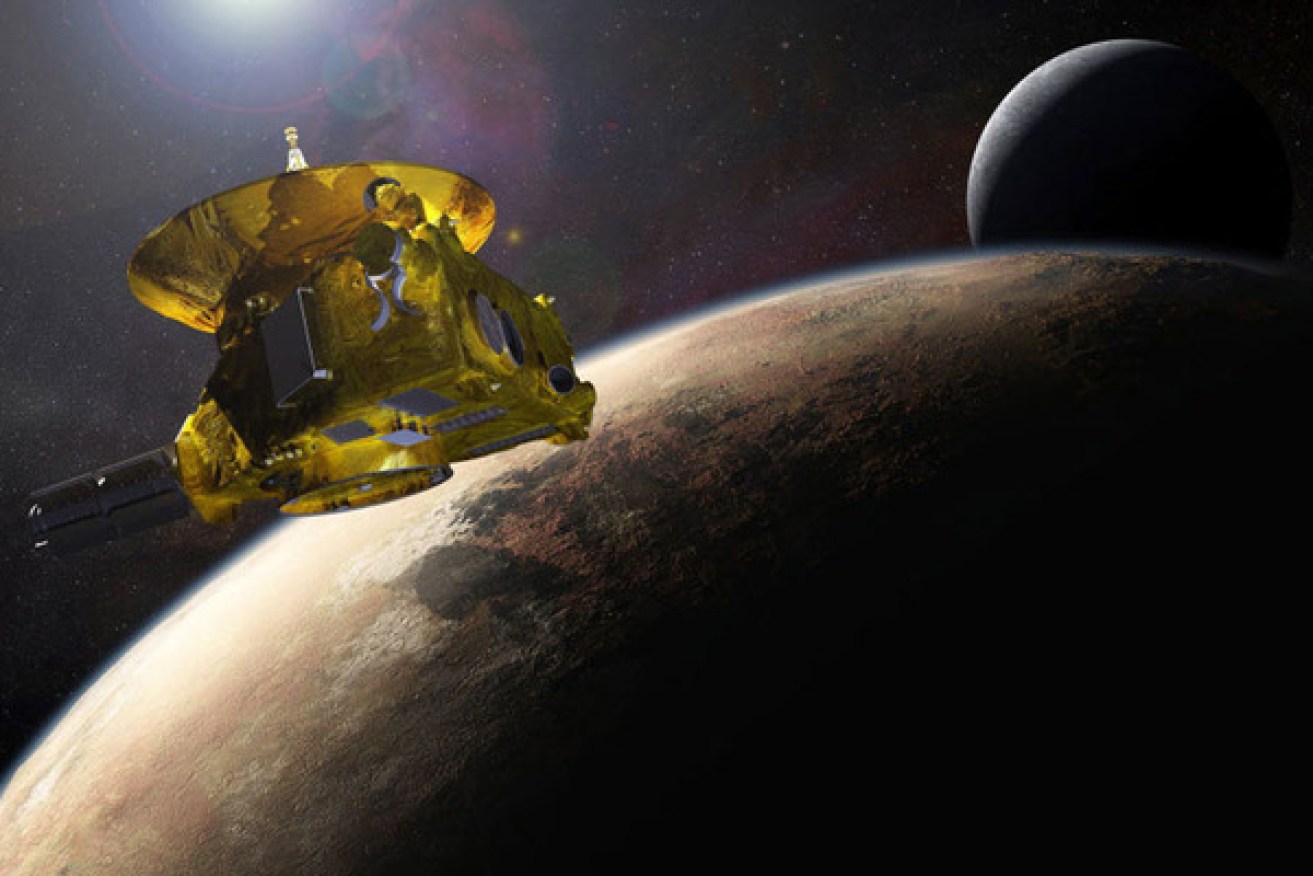NASA probe phones home from solar system edge

The New Horizons spacecraft has woken from a recent slumber. Photo: NASA
NASA’s New Horizons explorer has successfully “phoned home” after a journey to the most distant world ever explored by humankind, a frozen rock at the edge of the solar system that scientists hope will uncover secrets to its creation.
The nuclear-powered space probe has travelled 6.4 billion kilometres to come within (3540km of Ultima Thule, an apparently peanut-shaped, 32-km-long space rock in the uncharted heart of the Kuiper Belt.
The belt is a ring of icy celestial bodies just outside Neptune’s orbit.
Engineers at Johns Hopkins Applied Physics Laboratory in Maryland cheered when the spacecraft’s first signals came through the National Aeronautic and Space Agency’s Deep Space Network at 10.28EST Tuesday (2.28 AEDT Wednesday).
“We have a healthy spacecraft,” mission operations manager Alice Bowman declared.
The spacecraft will ping back more detailed images and data from Thule in the coming days, NASA said.
Launched in January 2006, New Horizons embarked on its journey toward the solar system’s edge to study the dwarf planet Pluto and its five moons.
“Last night, overnight, the United States spacecraft New Horizons conducted the farthest exploration in the history of humankind, and did so spectacularly,” New Horizons principal investigator Alan Stern told a news conference at the Johns Hopkins facility in Laurel.
An image of Thule, sent overnight and barely more detailed than previous images, deepens the mystery of whether Thule is a single rock shaped like an asymmetrical peanut or actually two rocks orbiting each other, “blurred together because of their proximity,” Stern said.
During a 2015 fly-by, the probe found Pluto to be slightly larger than previously thought. In March, it revealed methane-rich dunes on the icy dwarf planet’s surface.
Now 1.6 billion kilometres beyond Pluto for its second mission into the Kuiper Belt, New Horizons will study the makeup of Ultima Thule’s atmosphere and terrain in a months-long study to seek clues about the formation of the solar system and its planets.
-AAP








